Why the more disinfectants you use, the more harmful bacteria you get
This is what happens when you clean a surface in your house. A picture paints a thousand words, so read scroll down and see why disinfectants don't work anywhere near as well as you believe they do, and that continued use of them actually leads to a lot more resistant bad bacteria on your household kitchen, bathroom and floor surfaces!
The best way to explain this is to use diagrams to visually represent the surfaces in your house, whether they are floors, kitchen or bathroom surfaces, you choose.
Now imagine a grid ten squares by ten squares. This represents a section of your surface. Each square is a potential space on your surface for bacteria to live, and in this example we have 100 squares. A visual example of such a surface is set out below. The green dots are good bacteria; the red are harmful bacteria, and empty squares are space for bacteria to potentially expand into:
Normally the bacteria interact with each other in a self limiting way to ensure that they do not exceed that limit of 100, preferably remaining a little below the limit to ensure they do not have a sudden problem.
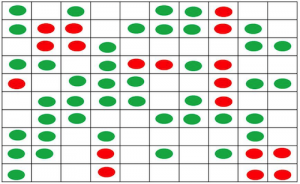
DIAGRAM 1 (Total 100: 42 good, 18 bad, 40 empty)
Since the micro-organisms have an average life span of a few days, there will be a continuous process of dying and growing by bacteria, and the total microbial community remains approximately constant.
Without human interference, there is a microbial ecosystem balance.
What happens with chemical cleaning and disinfection?
Now let’s disinfect our typical household surface and imagine the 100 squares available for bacteria to live in. Immediately after disinfection, the micro-organism count will have fallen sharply.
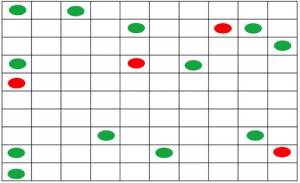
DIAGRAM 2 (Total 100: 12 good, 4 bad, 84 empty)
“Good job”, you think. The use of detergents and disinfectants initially appears to work well. But over the decades, harmful bacteria have evolved to increasingly be able to survive attacks from disinfectants, a process known as resistance. The longer term effectiveness of disinfectants is consequently greatly reduced.
In fact, because of resistance, on your surface a number of harmful bacteria will survive disinfection. A disinfectant has no aftereffect, it only works at the time of application, so after a few minutes the resistant survivors will begin to rapidly multiply. They now suddenly have a lot of space (on our grid the vacant spots of eliminated microorganisms), a lot of food (the eliminated (dead) micro-organisms themselves serve as a food source) and moisture (comes with the disinfectants).
Since resistant harmful germs can survive a disinfection attack, and multiply rapidly, any disinfection will result in a microbial community that contains more and more resistant harmful germs.
After a number of disinfections the new microbial community has even more harmful bacteria, and your household surface will look like this:
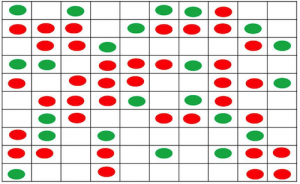
DIAGRAM 3 (Total 100: 22 good, 38 bad, 40 empty)
Compare Diagram 3 with Diagram 1. As more disinfection is used, more bad bacteria colonise the surface.
As we use more disinfection, more harmful microbes are found on our household surfaces. This is the disinfection paradox.
Probiotic cleaners work in a different way.
Let’s look again at our surface where food, moisture and space is available to keep a microbial community of up to 100 micro-organisms alive. Immediately after the first probiotic cleaning, the probiotics will occupy all the empty places on the surface. No other micro-organisms are killed or replaced, there is only the addition of good micro-organisms (probiotics) on the surface. The microbial community will look like this:
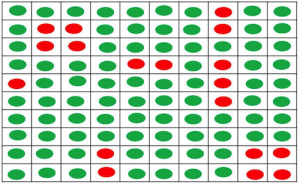
DIAGRAM 4 (Total 100: 82 good, 18 bad, 0 empty)
The surface is now fully occupied with the maximum of 100 micro-organisms.
What happens next is revolutionary!
Since the maximum 100 micro-organisms on the surface is immediately reached, the micro-organisms send out a signal (quorum sensing) in order to reduce their activity. After a few days, a large number of micro-organisms have died of old age and because of the reduced activity, no new micro-organisms grow to replace them.
This state is maintained by the microbial community until their number is decreased again to below 100 micro-organisms. Only then will they switch back to normal activity. However, by using a probiotic cleaner, new good bacteria fill any spaces on the surface. The probiotic cleaning keeps the number of micro-organisms to 100 or more.
By continuing to use probiotic cleaning, the original microbial community is forced to continuously decrease activity, so that the original micro-organisms will disappear with age from the community. After several cleanings, the probiotic microbial community will be changed as follows:
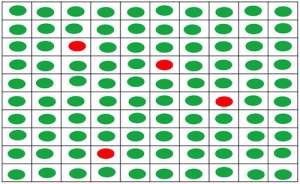
DIAGRAM 5 (Total 100: 96 good, 4 bad, 0 empty)
This surface has been largely occupied with good micro-organisms, and this has been achieved without having to use strong and toxic heavy duty chemicals. Instead, the self-regulating effect of nature ensures a healthy microflora with probiotics on all your surfaces.
For our theoretical surface of 100 availale spots the end result is:
Disinfection: (22 good, 38 bad, 40 empty)
Probiotic cleaning: (96 good, 4 bad, 0 empty)
A clear win for probiotic cleaning, which has been proven in a clinical trial carried out by a European University in a Belgian Hospital.
The average effect of probiotic cleaning for particularly problematic bacterial species were:
– Total bacterial count: increased 10% (probiotic bacteria taking up the empty spaces)
– Number of coliforms (indicator hygiene)) : reduced by 50%
– Number of S. aureus (MMSSA, MRSA)) bacteria : reduced by 80%
– Number of Clostridium difficile bacteria : reduced by 90%
